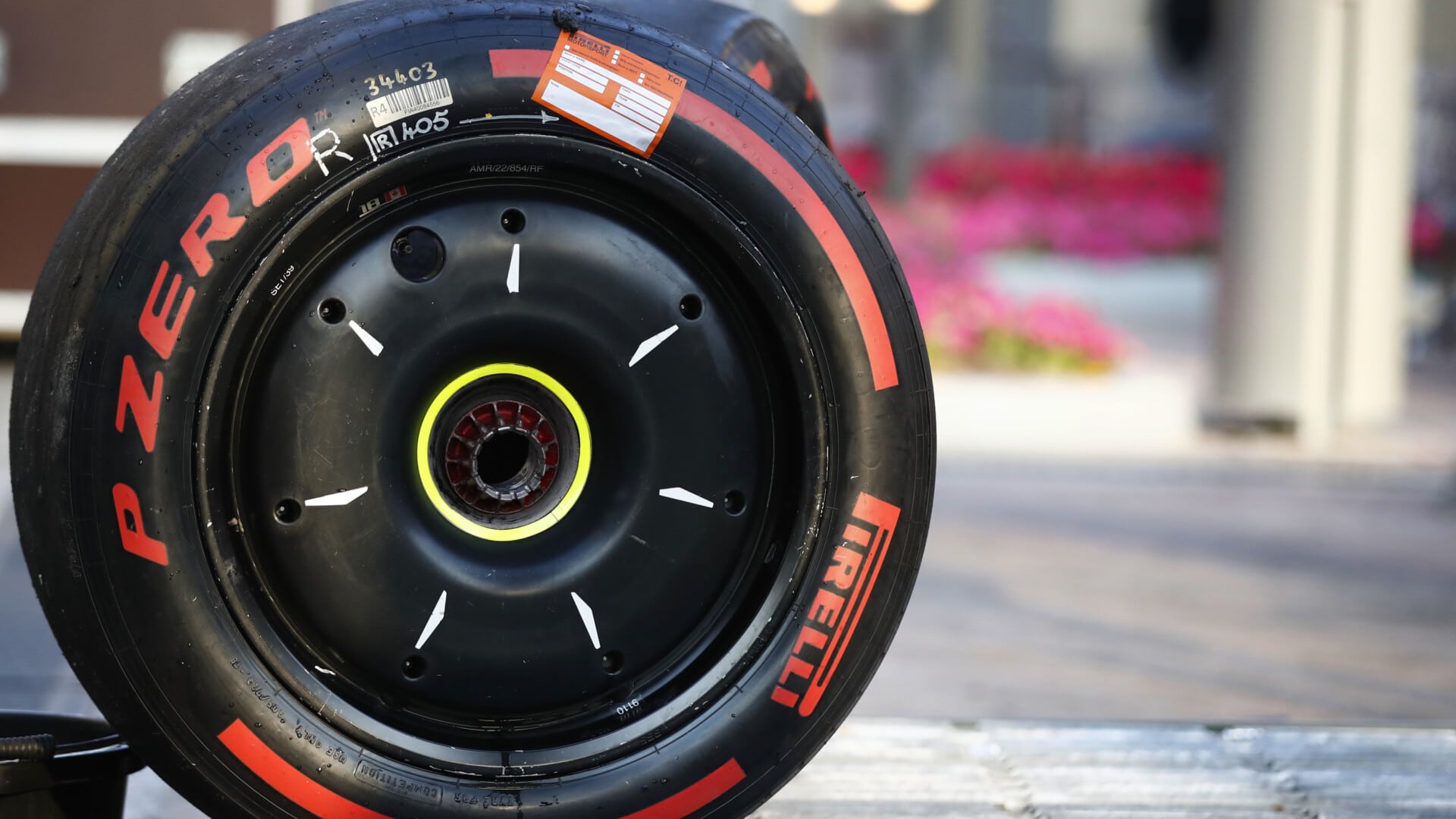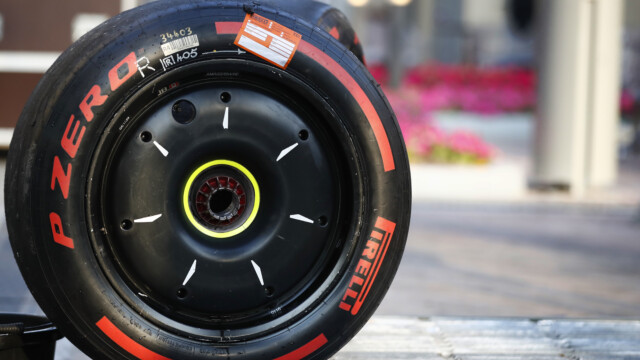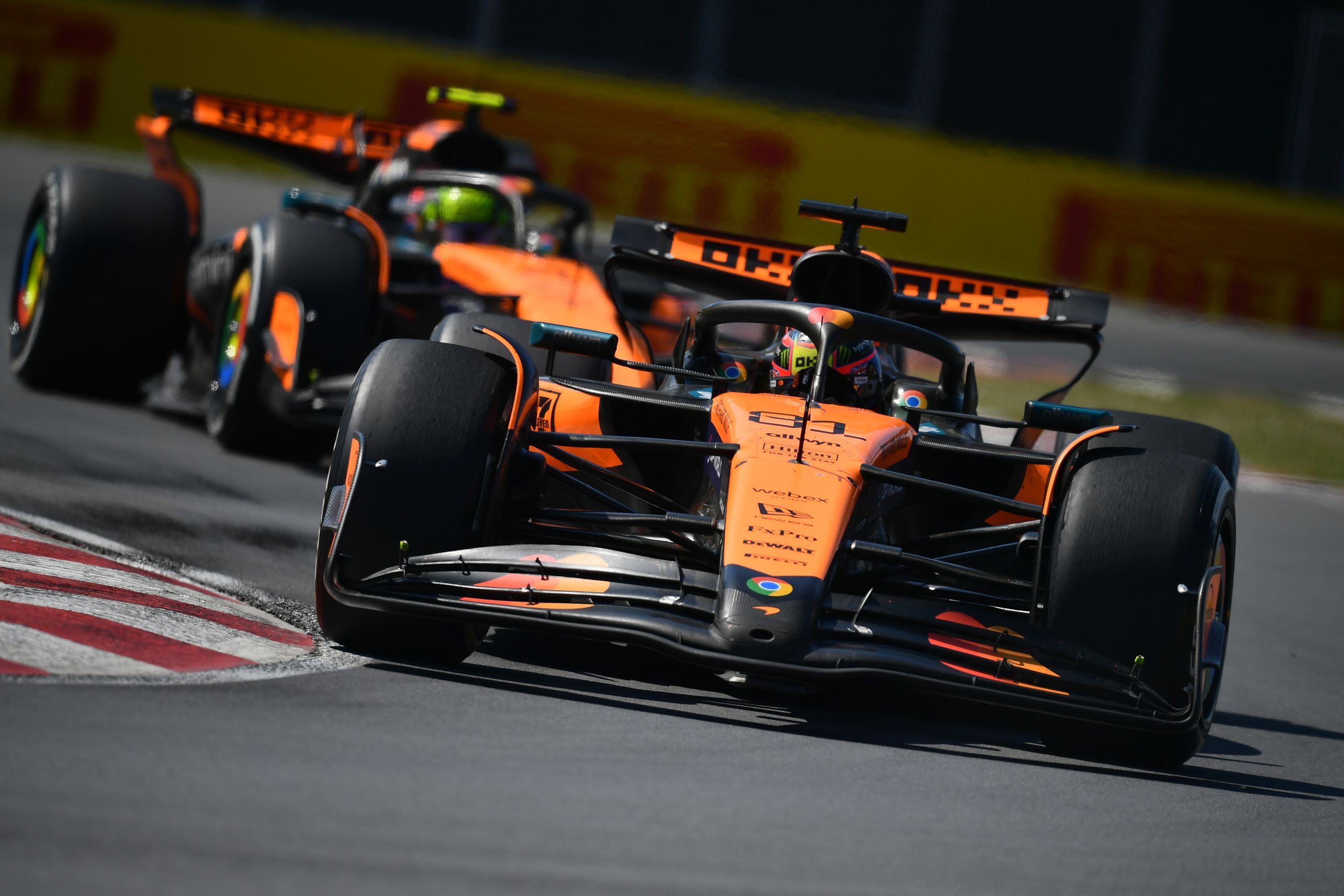How Formula 1 Tire Management Works


Tire management is a crucial aspect of Formula 1 racing. The right tire choice and effective tire management can mean the difference between a podium finish and a disappointing result. In this article, we’ll explore the different types of tires used in Formula 1, the factors that affect tire wear, and strategies for maximizing tire performance and longevity.
Formula 1 cars use a range of Pirelli tyre, including dry-weather tires, wet-weather tires, intermediate tires, and full-wet tires. The choice of tire depends on the track conditions and weather forecast. Proper tire management requires not only choosing the right tires for the conditions, but also adjusting the car setup and driving style to minimize tire wear. Temperature is also a key factor in tire management, as overheated tires can lead to premature wear and reduced performance.
By understanding the various factors that affect tire wear and implementing effective tire management strategies, teams and drivers can gain a competitive advantage on the track. In the following sections, we’ll delve deeper into the world of Formula 1 tire management and explore the strategies used by top teams and drivers to maximize tire performance.
Types of tires used in Formula 1
Formula 1 cars use a range of specialized tires designed to handle the demands of high-speed racing on a variety of track surfaces and weather conditions. In this section, we’ll explore the different types of tires used in Formula 1 and the features that make them suitable for different conditions.
Dry-weather tires, also known as slick tires or dry tires, are used when the track is dry and have no tread to allow for maximum contact with the track surface. The dry tyre is made from a soft compound of rubber to provide maximum grip, but they can wear out quickly if pushed too hard. Teams and drivers must carefully manage their use of the soft tyre to ensure that they have enough grip to achieve fast lap times without wearing out prematurely.
Wet-weather tires, also known as rain tires, are used when the track is wet or damp. The wet tyre has a tread pattern to help channel water away from the tire and maintain grip on the wet surface. Wet-weather tires are made from a harder compound of rubber than dry-weather tires to prevent them from overheating and losing grip. Teams and drivers must be careful not to push these tires too hard, as they can be prone to aquaplaning if driven too aggressively.
The intermediate tyre is a hybrid between dry-weather and wet-weather tires and is used when the track is damp but not fully wet. The intermediate tire has a tread pattern similar to wet-weather tires, but is made from a softer compound of rubber than full wet tires to provide more grip on a damp surface. Intermediate tires are a good choice when the track is drying out after a rain shower, as they provide more grip than full wet tires but are not as prone to overheating as dry-weather tires.
Full wet tires are the most specialized of the wet-weather tires and are used only in the heaviest rain or when standing water is present on the track. They have a very deep tread pattern to help channel water away from the tire and maintain grip in extreme wet conditions. Full wet tires are made from a very hard compound of rubber to prevent them from overheating and losing grip. They are not suitable for use on a drying track, as they have less grip than intermediate or dry-weather tires.
In addition to these four main types of tires, Formula 1 teams also have access to a range of tire compounds within each category to suit different track conditions and weather forecasts. Choosing the right tire for the conditions is a crucial aspect of tire management in Formula 1, and teams must carefully analyze track data and weather forecasts to make the best choice for each race.
In summary, Formula 1 cars use a range of specialized tires to suit different track and weather conditions. Dry-weather tires are used when the track is dry, wet-weather tires are used when the track is wet or damp, intermediate tires are used when the track is damp but not fully wet, and full wet tires are used in the heaviest rain or when standing water is present on the track. Teams and drivers must carefully manage their tire choices and use to ensure that they have the right level of grip and tire wear for the conditions.
Factors that affect tire wear in Formula 1
Tire wear is an important factor in Formula 1 racing, as teams and drivers must carefully manage their tire usage to ensure that they have enough grip to achieve fast lap times without wearing out prematurely. In this section, we’ll explore the various factors that can affect tire wear in Formula 1.
Two of the main factors that affect tire wear in Formula 1 are the track surface and conditions. Harder track surfaces tend to cause less tire wear than softer surfaces, as the tires have less grip and therefore generate less heat. As a result, teams and drivers may need to use softer tire compounds on softer track surfaces to achieve the necessary level of grip.
F1 car setup is another factor that can affect tire wear in F1 racing. Factors such as ride height, wing angle, and brake balance can all have an impact on the way that the tires interact with the track surface, and adjusting these settings can help to minimize tire wear. Teams and drivers must carefully balance the need for grip and tire wear when setting up their cars.
Driving style is also a key factor in tire wear in Formula 1. Drivers who push their tires too hard by braking late, cornering aggressively, or overdriving the car can cause excessive tire wear and overheating. On the other hand, drivers who adopt a smooth and consistent driving style can help to preserve their tires and extend their lifespan.
Temperature is another key factor that can affect tire wear in Formula 1. Tires generate heat as they grip the track surface, and if the temperature of the tire gets too high, it can cause the tire compound to break down and wear out more quickly. Teams and drivers must carefully manage tire temperature to ensure that they have enough grip without overheating the tires.
In summary, there are several factors that can affect tire wear in Formula 1, including the track surface and conditions, car setup, driving style, and temperature. Teams and drivers must carefully analyze these factors and implement effective tire management strategies to ensure that they have enough grip and tire wear for the conditions.
Strategies for managing tire wear in F1 racing
Effective tire management is a crucial aspect of Formula 1 racing, as teams and drivers must carefully manage their tire usage to ensure that they have enough grip to achieve fast lap times without wearing out prematurely. In this section, we’ll explore some of the strategies used by teams and drivers to manage tire wear in Formula 1.
One of the most important strategies for managing tire wear in Formula 1 is choosing the right tires for the track and weather conditions. Teams and drivers must carefully analyze track data and weather forecasts to determine the best tire choice for each race. Choosing the wrong tires can result in either too much or too little grip, leading to either excessive tire wear or a lack of pace.
Adjusting the car setup can also help to minimize tire wear in Formula 1. Factors such as ride height, wing angle, and brake balance can all have an impact on the way that the tires interact with the track surface, and adjusting these settings can help to minimize tire wear. Teams and drivers must carefully balance the need for grip and tire wear when setting up their cars.
Managing tire temperature is another key aspect of tire management. Formula 1 tyres generate heat as they grip the track surface, and if the temperature of the tire gets too high, it can cause the tire compound to break down and wear out more quickly. Teams and drivers can use a variety of strategies to manage tire temperature, including adjusting the car setup, using tire blankets to warm up the tires before a run, and managing their driving style to avoid overheating the tires.
Another strategy for managing tire wear in Formula One is pit stop strategy. Teams must carefully plan their pit stops to minimize the time spent in the pits and maximize track time, while also ensuring that they have enough tire wear to last the distance of the race. This can involve a variety of tactics, such as short fueling stints to minimize pit time, using multiple tire compounds during a race, and double stacking cars in the pits to save time.
In summary, there are a range of strategies that teams and drivers can use to manage tire wear in Formula 1, including choosing the right tires for the track and weather conditions, adjusting the car setup, managing tire temperature, and optimizing pit stop strategy. By implementing these strategies, teams and drivers can maximize tire performance and extend the lifespan of their tires.
The Formula 1 tire temperature camera
The Formula 1 tire temperature camera is a specialized camera that is used to monitor the temperature of the tires during a race. These cameras are mounted on the cars and provide real-time data on the temperature of the tires to the teams and drivers.
Tire temperature is an important factor in Formula 1 racing, as the temperature of the tire can affect its performance and lifespan. If the tire temperature gets too high, it can cause the tire compound to break down and wear out more quickly. On the other hand, if the tire temperature is too low, the tire may not provide enough grip and may be prone to sliding or overheating.
The Formula 1 tire temperature camera allows teams and drivers to monitor the temperature of their tires in real-time and make adjustments to the car setup or driving style to manage the temperature of the tires. This can help to optimize tire performance and extend the lifespan of the tires.
In addition to the tire temperature camera, teams and drivers also use a variety of other sensors and data systems to monitor the performance and condition of their tires. This can include sensors that measure tire pressure, tire wear, and tire temperature, as well as data systems that analyze track data and weather forecasts to help teams and drivers make informed decisions about tire management.
Formula 1 tire failure
Tire failure is a concern in Formula 1 racing, as it can have serious consequences for the performance and safety of the car. Tire failure can occur for a variety of reasons, including excessive wear, overheating, or damage to the tire.
Excessive wear is a common cause of tire failure in Formula 1. Tires are designed to withstand a certain amount of wear and tear, but if they are pushed too hard or used for too long, they can wear out and fail. Teams and drivers must carefully manage their tire usage to ensure that they have enough grip to achieve fast lap times without wearing out the tires prematurely.
Overheating is another cause of tire failure in Formula 1. If the temperature of the tire gets too high, it can cause the tire compound to break down and wear out more quickly. This can be caused by a variety of factors, including the track surface, car setup, driving style, and tire choice. Teams and drivers must carefully manage tire temperature to ensure that they have enough grip without overheating the tires.
Damage to the tire can also cause tire failure in Formula 1. This can be caused by debris on the track, contact with other cars, or accidental damage to the tire during a pit stop. Teams and drivers must be careful to avoid damaging their tires and must be prepared to make adjustments to their strategy if a tire failure occurs.
In summary, tire failure is a concern in Formula 1 racing and can have serious consequences for the performance and safety of the car. It can be caused by a variety of factors, including excessive wear, overheating, and damage to the tire. Teams and drivers must carefully manage their tire usage and temperature to minimize the risk of tire failure.
Formula 1 tire weight
Formula 1 tires are specially designed to withstand the demands of high-speed racing and are made from a range of advanced materials to provide maximum grip and performance. The weight of a Formula 1 tire varies depending on the size and type of tire, but most tires used in Formula 1 racing weigh around 10-15 kilograms (22-33 pounds).
Formula 1 tires are made from a range of advanced materials, including rubber, steel, and fabric, and are designed to provide maximum grip and performance while also being lightweight and durable. The specific construction of the tire can affect its weight, as well as the size of the tire and the type of compound used.
In addition to the weight of the tire itself, Formula 1 teams must also consider the weight of the tire rim and other components when designing their cars. The total weight of the tires and wheels is a critical factor in the overall performance of the car, as it affects the balance and handling of the vehicle. As a result, teams and drivers must carefully optimize the weight of their tires and wheels to achieve the best possible performance on the track.
What are the F1 tire rules?
In Formula 1, teams and drivers are required to follow certain rules related to tire usage. These rules include:
- Each team is allowed to use up to 13 sets of dry-weather tires per car per race weekend. This includes three sets of tires for the first free practice session, two sets for the second free practice session, and eight sets for the rest of the race weekend (including qualifying and the race).
- Each team is also allowed to use up to four sets of wet-weather tires per car per race weekend. These tires can be used in any session of the race weekend.
- In addition to these tire allocations, each team is also allowed to use up to two sets of tire testing compounds per car per year. These compounds are used for testing and development purposes and cannot be used in a race.
- Teams and drivers must use at least two different tire compounds during a race, with one of these compounds being the harder compound. This rule is intended to encourage teams and drivers to use different tire strategies and make multiple pit stops during a race.
- Teams and drivers are also required to use both tire compounds during the race, with at least one lap being completed on each compound. This rule is intended to encourage teams and drivers to use both tire compounds during a race and to prevent them from focusing solely on one compound.
Overall, these tire rules are intended to encourage teams and drivers to use different tire strategies and make multiple pit stops during a race, which helps to make the racing more exciting and unpredictable.
What are the F1 Sprint Race tire rules?
The F1 Sprint Race is a new format that was introduced to Formula 1 in 2021. The sprint race is held on Saturday in place of the traditional qualifying session and is intended to add an extra element of excitement and strategy to the race weekend.
For the sprint race, teams and drivers are required to follow the same tire rules as for a regular race. This means that each team is allowed to use up to 13 sets of dry-weather tires per car per race weekend, as well as up to four sets of wet-weather tires. Teams and drivers must use at least two different tire compounds during the sprint race, with one of these compounds being the harder compound, and they must also use both tire compounds during the race, with at least one lap being completed on each compound.
In addition to these tire rules, there are also some specific rules related to the sprint race format. For example, teams and drivers are not allowed to change the setup of their cars between the sprint race and the main race on Sunday. This is intended to prevent teams from making significant changes to their cars between the two races.
Overall, the tire rules for the sprint race are designed to encourage teams and drivers to use different tire strategies and make multiple pit stops during the race, which helps to add an extra element of excitement and strategy to the race weekend.
Formula 1 Tire Management: The Conclusion
In conclusion, tire management is a crucial aspect of Formula 1 racing. The right tire choice and effective tire management can mean the difference between a podium finish and a disappointing result. By understanding the different types of tires used in Formula 1, the factors that affect tire wear, and the strategies for maximizing tire performance and longevity, teams and drivers can gain a competitive advantage on the track.
In the future, we can expect to see further developments in tire technology and strategies for maximizing tire performance. As tires continue to play a crucial role in the performance of Formula 1 cars, teams and drivers will continue to focus on optimizing their tire management strategies to gain a competitive edge.
F1 Tires – FAQs
Q: What are the different types of tires used in Formula 1?
A: Formula 1 cars use a range of specialized tires, including dry-weather tires, wet-weather tires, intermediate tires, and full wet tires. The choice of tire depends on the track conditions and weather forecast.
Q: What factors affect tire wear in Formula 1?
A: There are several factors that can affect tire wear in Formula 1, including the track surface and conditions, car setup, driving style, and temperature. Teams and drivers must carefully analyze these factors and implement effective tire management strategies to ensure that they have enough grip and tire wear for the conditions.
Q: How do teams and drivers manage tire wear in Formula 1?
A: There are a range of strategies that teams and drivers can use to manage tire wear in Formula 1, including choosing the right tires for the track and weather conditions, adjusting the car setup, managing tire temperature, and optimizing pit stop strategy. By implementing these strategies, teams and drivers can maximize tire performance and extend the lifespan of their tires.
Q: How often do teams and drivers change tires during a race?
A: The frequency of tire changes during a race depends on a variety of factors, including the track conditions, the tire compound being used, and the driving style of the driver. In general, teams and drivers will change tires at least once during a race, but it is not uncommon for teams to make multiple tire changes depending on the conditions and strategy.
Q: How do teams and drivers decide which tire compound to use during a race?
A: The choice of tire compound depends on a variety of factors, including the track surface, weather conditions, and the expected duration of the race. Teams and drivers must carefully analyze track data and weather forecasts to determine the best tire compound for the conditions. They may also use a range of tire compounds during a race to suit different stages of the race or changing track and weather conditions.
Q: How do teams and drivers manage tire temperature during a race?
A: Managing tire temperature is an important aspect of tire management in Formula 1. Teams and drivers can use a variety of strategies to manage tire temperature, including adjusting the car setup, using tire blankets to warm up the tires before a run, and managing their driving style to avoid overheating the tires.
Q: What happens if a team or driver runs out of tires during a race?
A: If a team or driver runs out of tires during a race, they will be unable to continue racing and will have to retire from the event. It is important for teams and drivers to carefully manage their tire usage to ensure that they have enough tires to last the distance of the race.





